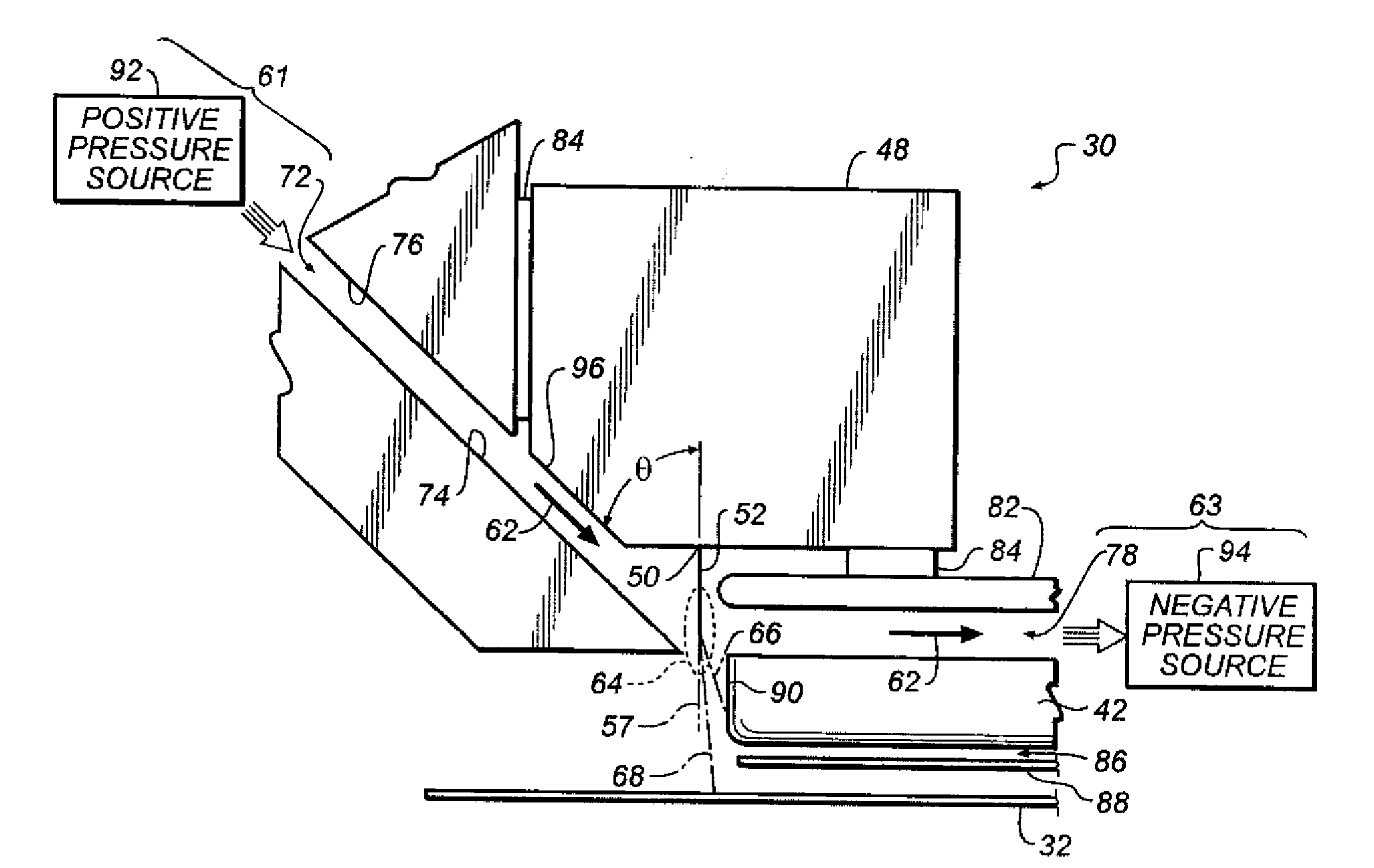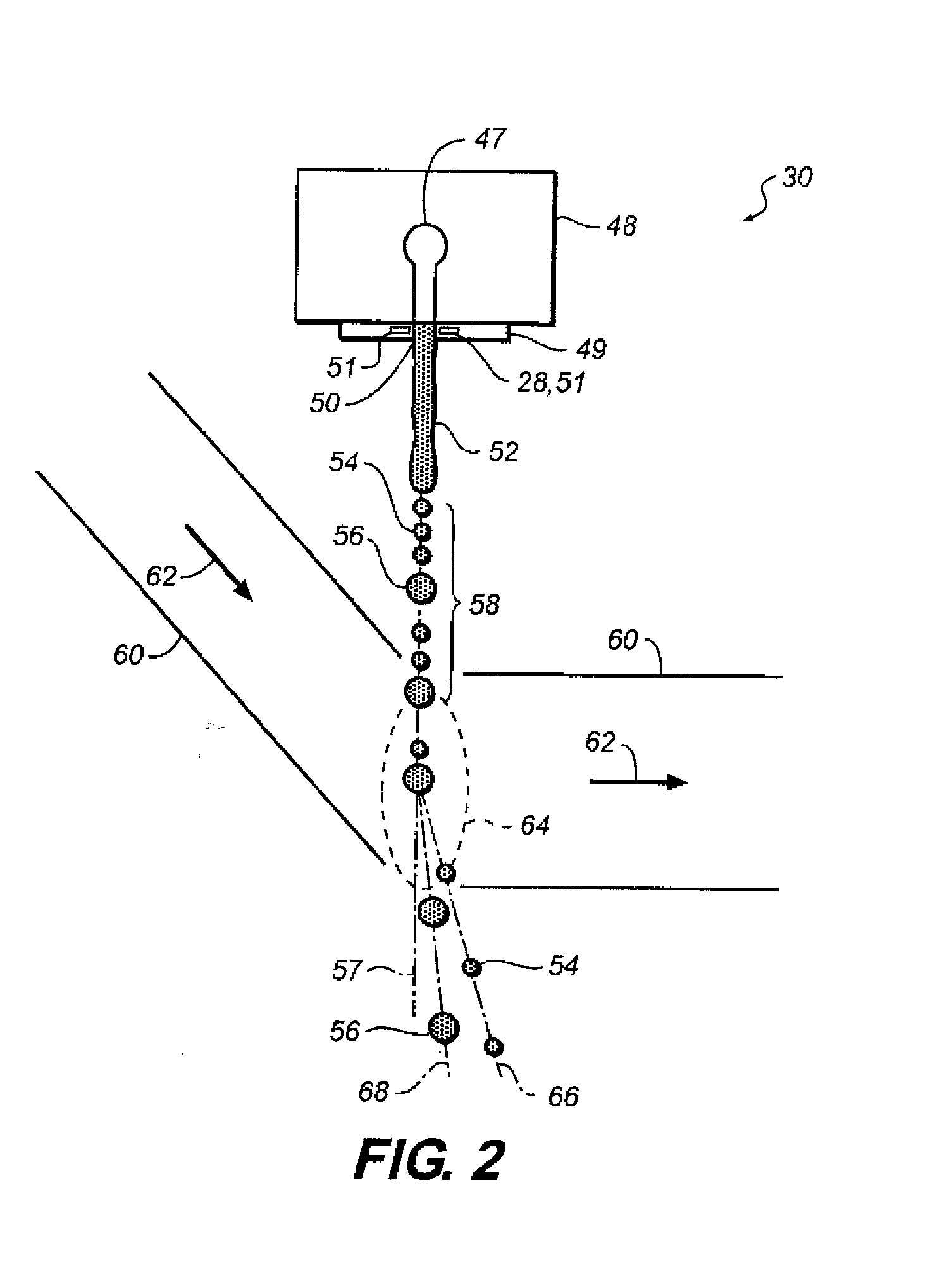Continuous inkjet printing method
a technology of inkjet printing and continuous ink, which is applied in the field of inkjet ink, can solve the problems of reducing print quality, forming additional droplet types undetected, and reducing print quality, so as to reduce dynamic surface tension, improve ink film formation on the catcher face, and restore the effect of operating print margin
- Summary
- Abstract
- Description
- Claims
- Application Information
AI Technical Summary
Benefits of technology
Problems solved by technology
Method used
Image
Examples
examples
[0118]The suffix (c) designates control or comparative ink jet ink compositions, while the suffix (e) indicates example ink jet ink compositions. The abbreviation “Wt %” indicates the ingredient weight percent. Carbon black pigment dispersion content is based on the weight percent of carbon black.
Preparation of Continuous Ink Jet Ink Samples
Polymeric Dispersant and Additive Preparation
Polymeric Dispersant P-1
[0119]In a representative procedure, a 5-liter, three-necked round bottom flask equipped with a mechanical stirrer, a reflux condenser, and a gas inlet was charged with 225 g of 1-methoxy-2-propanol and was sparged with nitrogen. Akzo-Nobel Chemicals, Inc., initiator Perkadox AMBN-GR (1.9 g) was added with stirring. A reactant reservoir was charged with 225 g of 1-methoxy-2-propanol, 23.4 g of 1-dodecanethiol, 203.5 g of benzyl methacrylate, 165.0 g of stearyl methacrylate, and 181.5 g of methacrylic acid, and the solution was degassed by nitrogen sparging. AMBN-GR (7.7 g) was a...
PUM
 Login to View More
Login to View More Abstract
Description
Claims
Application Information
 Login to View More
Login to View More - R&D
- Intellectual Property
- Life Sciences
- Materials
- Tech Scout
- Unparalleled Data Quality
- Higher Quality Content
- 60% Fewer Hallucinations
Browse by: Latest US Patents, China's latest patents, Technical Efficacy Thesaurus, Application Domain, Technology Topic, Popular Technical Reports.
© 2025 PatSnap. All rights reserved.Legal|Privacy policy|Modern Slavery Act Transparency Statement|Sitemap|About US| Contact US: help@patsnap.com



